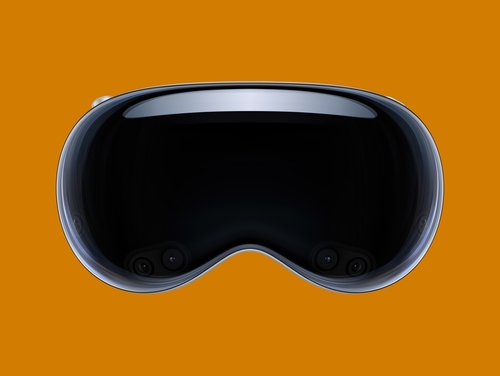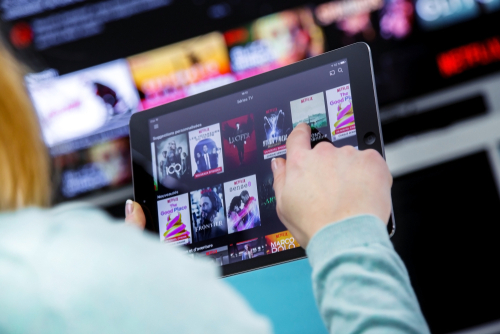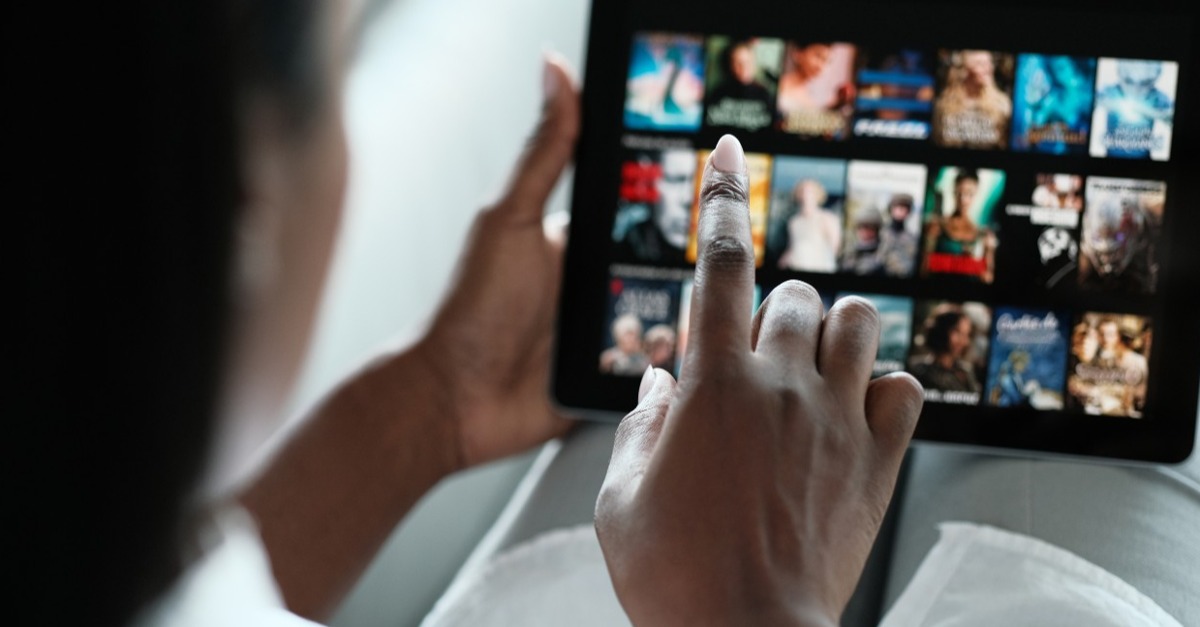Apple (NASDAQ: AAPL) showcased a number of new products during its Worldwide Developers Conference (WWDC) on June 5, 2023, most notably its new virtual reality headset, Vision Pro. The new headset will retail for $3,499 and be available from early next year. What happened during the conference and what are analysts focusing on, specifically surrounding the new Vision Pro headset?
Figure 1: First impressions of the Vision Pro
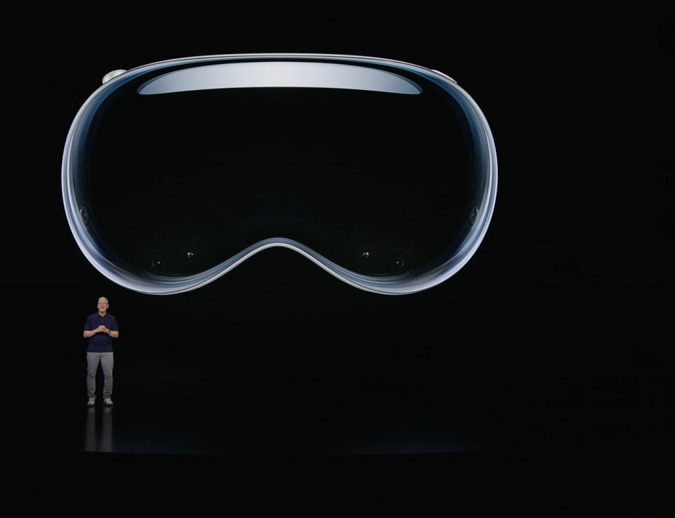
Source: Apple WWDC (June 5, 2023)
How does Apple’s new Vision Pro work?
The lines of work and play are continuing to blur further with the introduction of Apple’s virtual reality headset, Vision Pro. The headset is controlled with a combination of voice, eye, and finger movement. Users can enjoy immersive, interactive professional and personal experiences that leverage a comprehensive array of applications and functions. And it’ll all be available in 3-D.
Users can use the Vision Pro for bringing apps and experiences into their preferred space, like watching movies, playing games, and chatting over FaceTime with friends and family. CEO of Disney, Bob Iger, made a guest appearance and mentioned that Disney+ will be available for Vision Pro on day one.
Virtual reality in the workplace?
In addition, users can access an enterprise workspace for collaboration that allows use of work applications like Microsoft Office, and other collaboration tools. According to Susan Prescott, Apple’s VP of Worldwide Developer Relations, Microsoft Excel, Word, and Teams make full use of the expansive canvas and full-text rendering. There seems to be a significant opportunity to expand usage for enterprises, as work spaces try to find ways to engage, inspire, and build trust, loyalty, and creativity in a virtual world that offers employees more flexibility.
As work culture currently stands, it has been challenging to build and sustain culture over 2-D virtual environments. In fact, burn-out and cultural erosion have been noted during the “great resignation” that prevailed post-pandemic. With broad adoption of virtual reality environments, will users ever need to go to an office again?
What are analysts expecting for Apple Accessories revenue?
Currently, Apple Watch and Accessories are each expected by analysts to make up around 5-6% of total revenue in FY 2024, with each expected to generate $20+ billion in revenue by the end of FY 2024, according to Visible Alpha consensus estimates. How long will it take the Vision Pro itself to account for $20 billion in revenues? There is also a big question about what level of gross margin the new product will generate and what role it will play in driving more high margin services.
Here are the current analyst estimates for the key line items, Accessories and Apple Watch:
Figure 2: Analyst estimates for Apple Accessories and Apple Watch
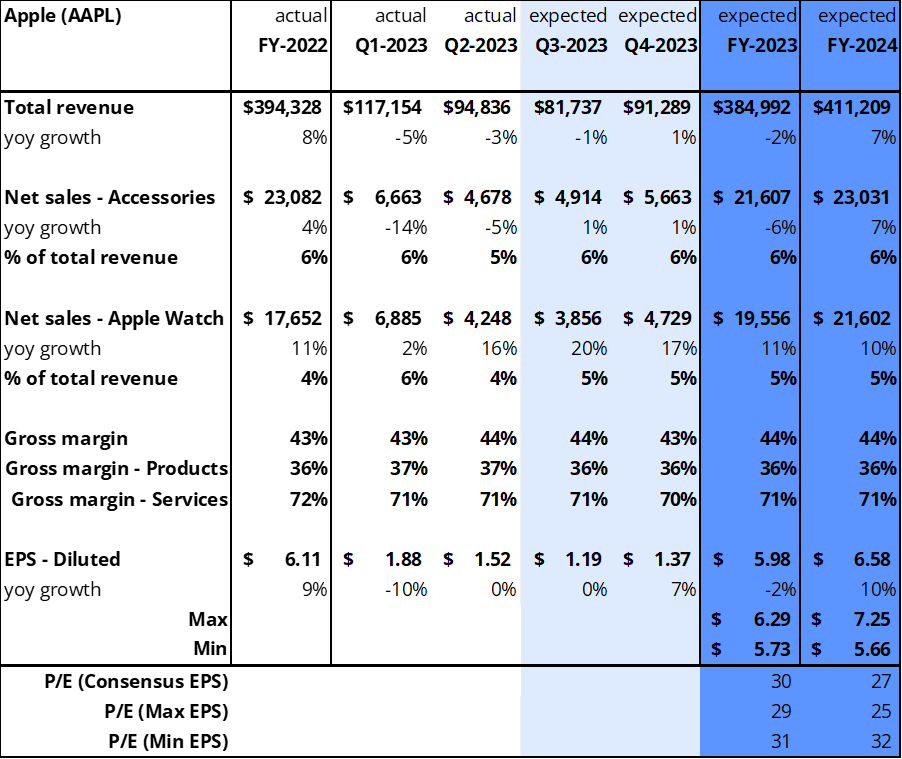
Source: Visible Alpha (June 6, 2023). All dollar figures are in millions, with the exception of EPS.
What jumps out about the Vision Pro experience
Mike Rockwell, VP of the Technology Development Group, highlighted the Apple silicon dual-chip design, M2 and R1. M2 allows the device to remain quiet and cool, while R1 reduces latency.
Given the high levels of sophisticated compute this device is processing, heat and noise can impede the experience for the user. M2 is designed to address these issues.
Latency has long been a problem with virtual reality and 3-D experiences, because it tends to cause motion discomfort. I, personally, have become uncomfortable while trying out numerous products in the past, and am keen to see how the new R1 ensures experiences do not have latency and create motion discomfort for users.
Figure 3: Apple’s dual-chip design (M2 and R1)
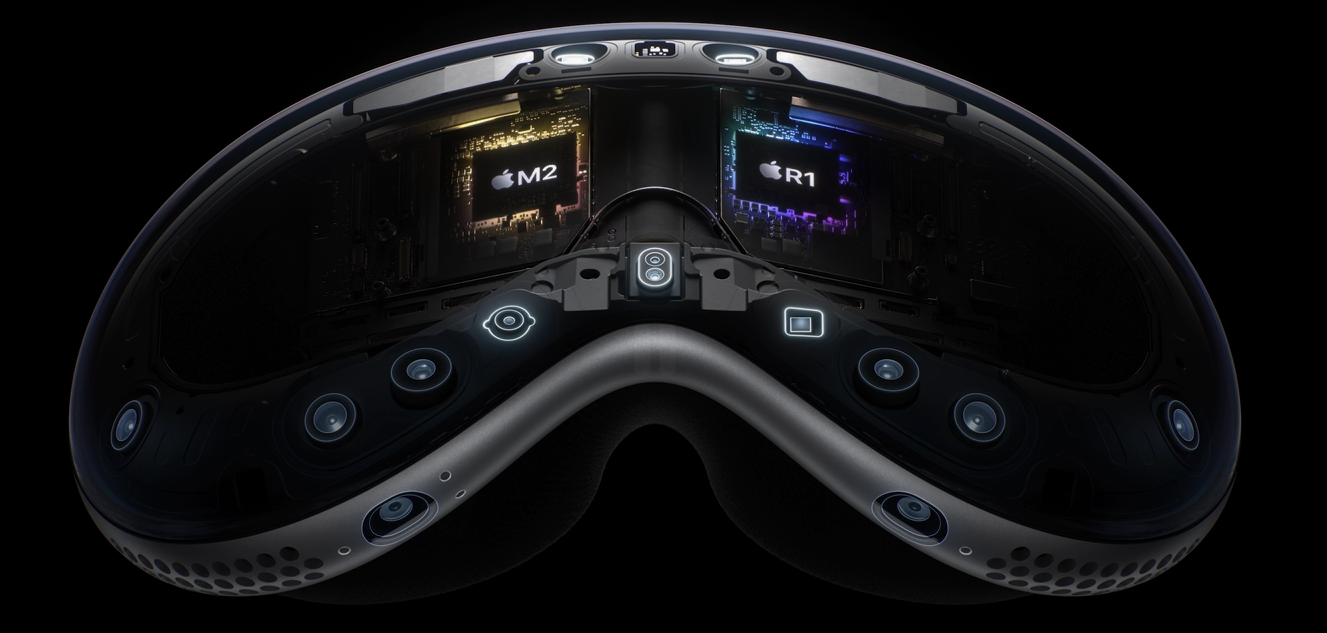
Source: Apple WWDC (June 5, 2023)
